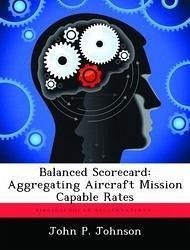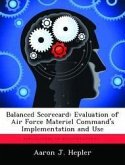The purpose of this thesis was to examine Logistics Balanced Scorecard (BSC) metrics on aircraft Mission Capable (MC) rates and to recommend a MC rate aggregation method for families of aircraft (aka mission areas - Airlift, Tanker, Bomber, etc) and to also recommend a method for defining the mission area Red, Yellow, and Green stop light standards used on the Balanced Scorecard dashboard. Aircraft Mission Capable rates are currently aggregated up to the Mission Design Series (MDS) level under the Warfighter perspective of Balanced Scorecard and this produces 36 top-level metrics, one for each Mission Design Series. Aggregation of aircraft Mission Capable rates to the mission level will reduce the number of top-level metrics to eight and provide a better indication of mission area status and capabilities. An Analytic Hierarchy Process (AHP) was utilized to calculate an aircraft Capability Weighting Factor based on Speed, Range, Payload, Utilization Rate by Flying Hours, and Maintenance Man-Hours per Flying Hour for the Airlift, Tanker, and Bomber mission areas. The weighting factors were multiplied by the number of MC aircraft in each MDS and aggregated to produce a mission area capability level, which was then standardized in term of a common MDS within each mission area.








